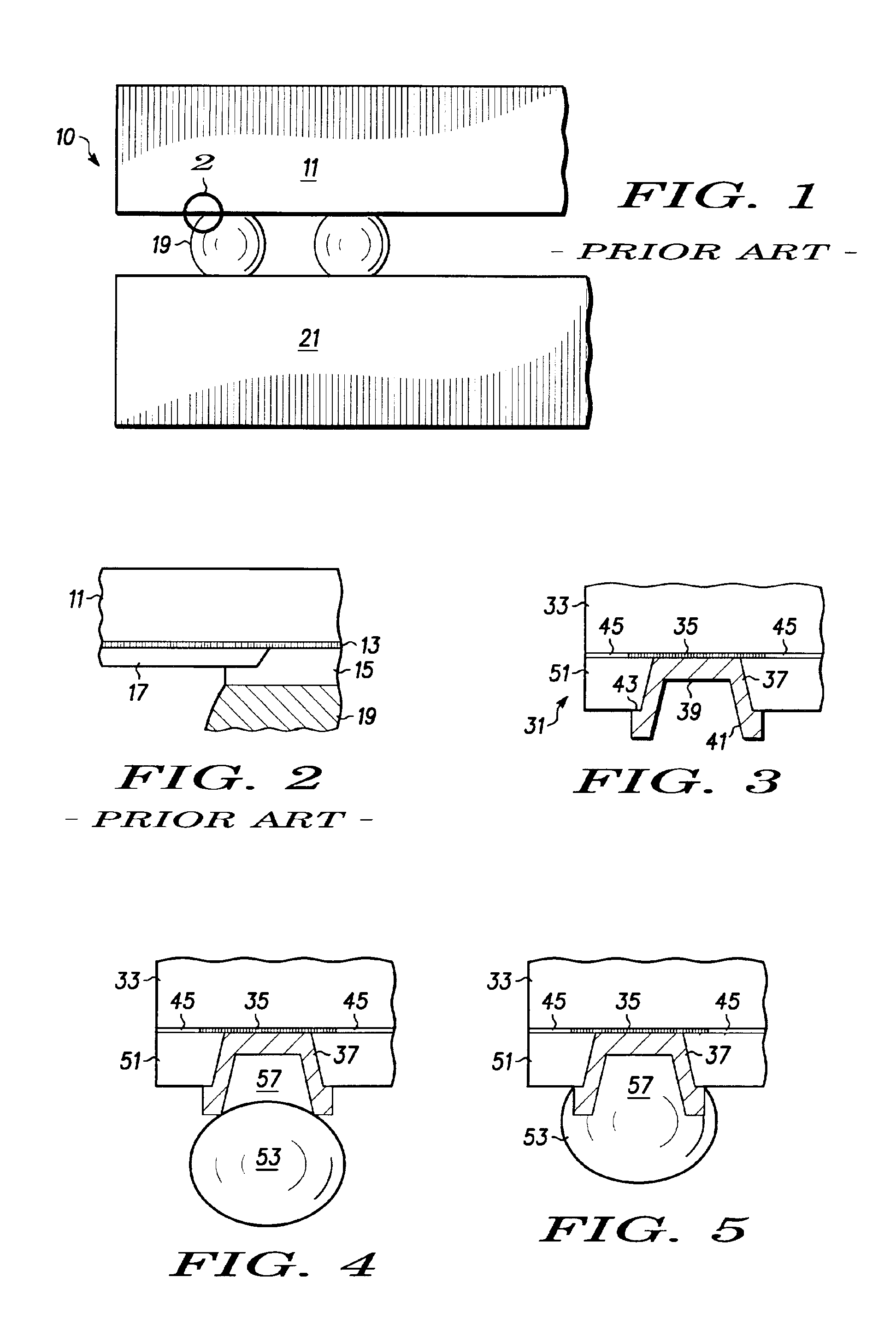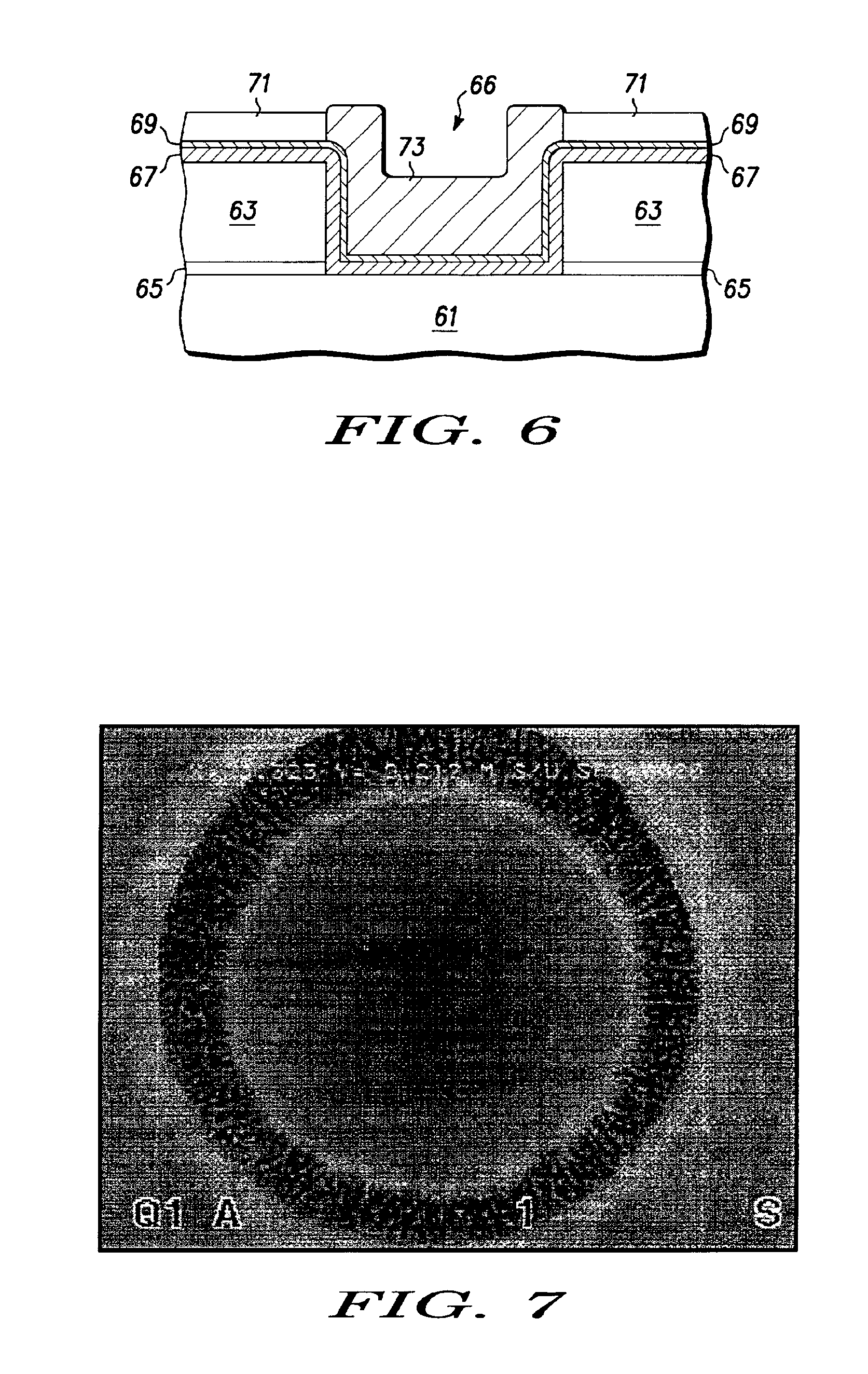Under bump metallurgy structural design for high reliability bumped packages
a bumped package and bumped technology, applied in the direction of semiconductor devices, electrical equipment, semiconductor/solid-state device details, etc., can solve the problems of not only not being able to facilitate solder ball placement, but little consideration has been given to the development of ubm structures that promote solder joint reliability, and achieves improved mechanical strength of the solder ball-ubm joint, improved reliability of the package, and improved reliability. the effect of lifetim
- Summary
- Abstract
- Description
- Claims
- Application Information
AI Technical Summary
Benefits of technology
Problems solved by technology
Method used
Image
Examples
example 1
[0058]This example illustrates the increase in lifetime and strain distribution afforded by solder joints made in accordance with the teachings herein.
[0059]The virtues of a variety of solder joints and UBM designs were explored by subjecting the designs to a finite element analysis using a 2-D plane strain approach. This type of analysis is described in detail in O. C. Zienkiewicz, “The Finite Element Method” (3rd Ed. 1977). Other, more elaborate and time intensive analyses can also be performed for this purpose, and some of these analyses can afford somewhat greater accuracy in certain situations. These include, for example, 3-D non-linear finite element methods. However, the use of a 2-D plane strain non-linear finite element approach here greatly simplifies the model while providing decent comparative results.
[0060]The designs were also studied using a global model-sub-model approach, which enables the evaluation of the detailed stress distribution in the under bump metallurgy a...
PUM
 Login to View More
Login to View More Abstract
Description
Claims
Application Information
 Login to View More
Login to View More - R&D
- Intellectual Property
- Life Sciences
- Materials
- Tech Scout
- Unparalleled Data Quality
- Higher Quality Content
- 60% Fewer Hallucinations
Browse by: Latest US Patents, China's latest patents, Technical Efficacy Thesaurus, Application Domain, Technology Topic, Popular Technical Reports.
© 2025 PatSnap. All rights reserved.Legal|Privacy policy|Modern Slavery Act Transparency Statement|Sitemap|About US| Contact US: help@patsnap.com



